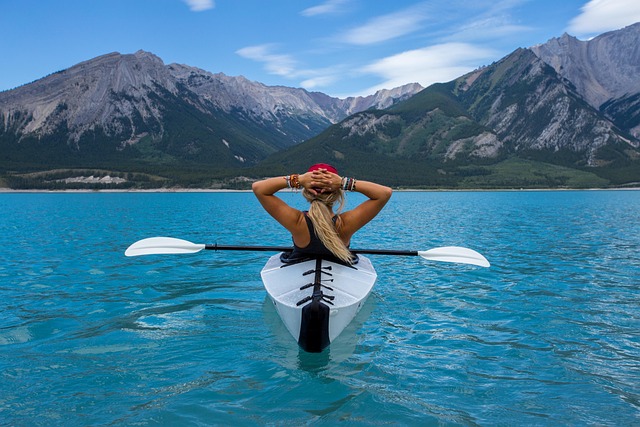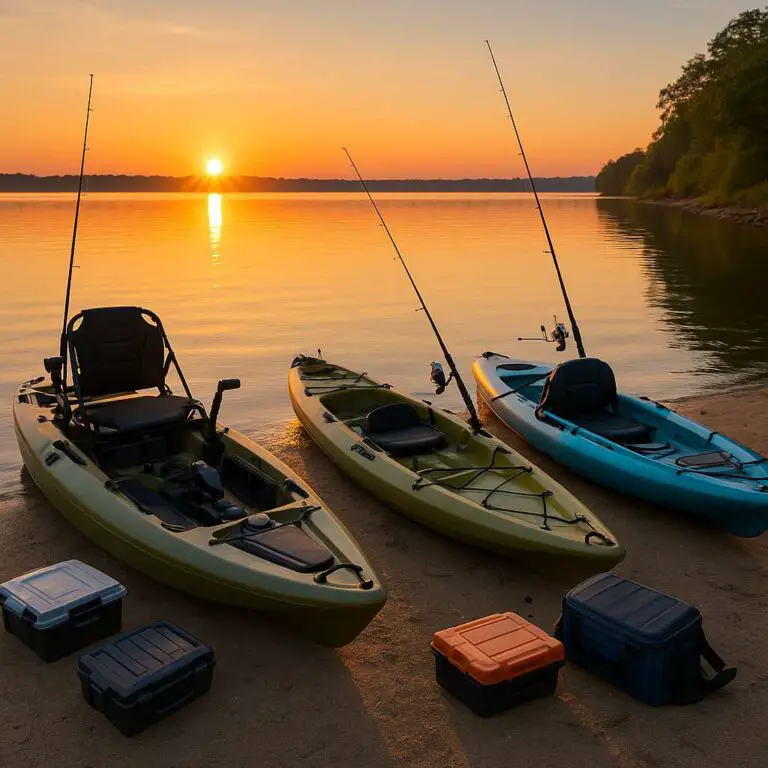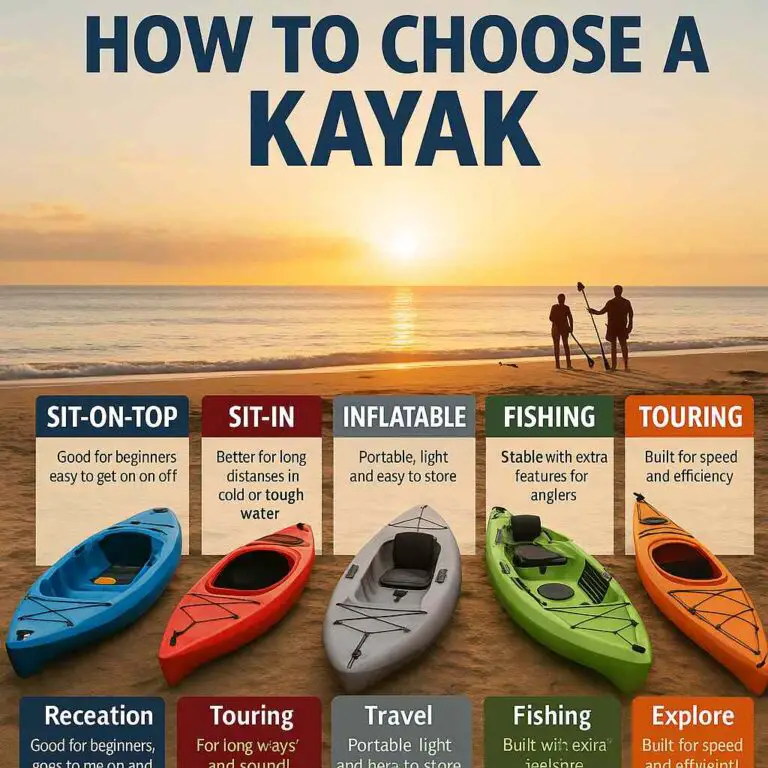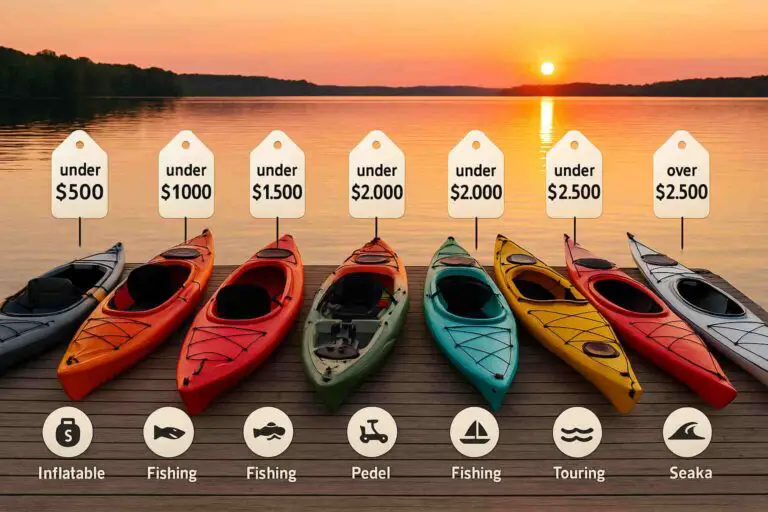When it comes to kayaking, there are many factors to consider to ensure a safe and enjoyable experience on the water. One such factor is the use of kayak stabilizers. These devices are designed to enhance the stability of your kayak, and they can be a valuable addition for some paddlers. However, like any piece of equipment, kayak stabilizers come with their own set of pros and cons. Are kayak stabilizers worth it?
If you’re new to kayaking or want stability for fishing, stabilizers are a great investment. But if you seek speed for rapids or racing, they may not be the best choice.
In this article, we’ll delve into the world of kayak stabilizers and help you decide whether they are worth the investment for your kayaking adventures.
Understanding Kayak Stabilizers
Before we dive into the pros and cons of kayak stabilizers, let’s first understand what they are and how they work. Kayak stabilizers, also known as outriggers or pontoons, are additional floatation devices attached to the sides of a kayak. They are typically made of materials like plastic, aluminum, or inflatable materials and serve the primary purpose of increasing a kayak’s stability on the water.
The basic concept behind kayak stabilizers is to provide additional buoyancy to counteract the tipping or rocking motion of the kayak. This added stability can be particularly beneficial for paddlers who are new to kayaking, have limited balance, or are using kayaks with inherently unstable designs, such as narrow racing kayaks or fishing kayaks with high centers of gravity.
Pros of Using Kayak Stabilizers
Now, let’s explore the various advantages of using kayak stabilizers:
1. Enhanced Stability
The most obvious and significant advantage of using kayak stabilizers is the enhanced stability they provide. With stabilizers attached to your kayak, you’ll experience less side-to-side rocking, making it easier to maintain your balance. This can be especially helpful when fishing, taking photographs, or engaging in activities that require a steady platform.
2. Increased Safety
Improved stability translates to increased safety on the water. Kayak stabilizers can help prevent capsizing and reduce the risk of accidents, which is particularly important for novice paddlers and those exploring challenging water conditions. If you’re kayaking in rough waters or unpredictable conditions, stabilizers can provide an extra layer of security.
3. Confidence Boost
For beginners or individuals who may be apprehensive about kayaking due to balance concerns, kayak stabilizers can boost confidence. Knowing that you have added stability can make your kayaking experience more enjoyable and less intimidating, encouraging you to explore new waters and build your skills.
4. Fishing Advantage
Many kayak anglers find kayak stabilizers invaluable for their fishing expeditions. Stabilizers provide a stable platform for casting, reeling, and handling fish, allowing anglers to focus on their fishing techniques rather than struggling to maintain balance. They also provide a better vantage point for spotting fish and navigating through different fishing spots.
5. Increased Payload Capacity
Kayak stabilizers can also enhance the overall carrying capacity of your kayak. By providing extra buoyancy, they allow you to carry additional gear, such as camping equipment, coolers, or other heavy items, without compromising stability. This is particularly beneficial for extended kayak trips or multi-day adventures.
6. Suitable for Certain Kayak Designs
Some kayak designs, such as sit-on-top kayaks or inflatable kayaks, are more prone to instability due to their shape and structure. Kayak stabilizers can help compensate for these design limitations, making them more suitable for a wider range of activities and paddlers.
Cons of Using Kayak Stabilizers
While kayak stabilizers offer numerous advantages, they also have some drawbacks that you should consider:
1. Added Weight and Bulk
One of the primary drawbacks of kayak stabilizers is the added weight and bulk they introduce to your kayak. The stabilizers themselves, along with their mounting hardware, can significantly increase the overall weight of your kayak. This added weight may make it more challenging to transport and maneuver your kayak, especially if you have to load it onto a vehicle or carry it over long distances.
2. Reduced Maneuverability
The increased width and drag caused by kayak stabilizers can lead to reduced maneuverability. Turning your kayak may require more effort, and you may find it less responsive when navigating tight spaces or obstacles. This reduced maneuverability can be a significant drawback if you enjoy exploring narrow waterways or participating in kayak races.
3. Cost
Quality kayak stabilizers are not cheap, and the cost can be a deterrent for some paddlers. Additionally, you may need to invest in additional accessories, such as mounting kits and hardware, which can further increase the overall cost of outfitting your kayak with stabilizers.
4. Installation and Setup
Installing kayak stabilizers can be a bit complex, and it may require drilling holes or making modifications to your kayak. If you’re not comfortable with DIY projects or if you’re concerned about potentially damaging your kayak, you may need to seek professional assistance for installation. Additionally, the setup process can be time-consuming, which may not be ideal if you’re looking for a quick and hassle-free solution.
5. Limited Portability
Inflatable kayak stabilizers offer a level of portability since they can be deflated and packed away for transport. However, rigid stabilizers can be cumbersome to transport, especially if you have limited storage space. You’ll need to consider how you’ll transport them to and from your paddling destination.
6. Not Always Necessary
Not every kayaker needs stabilizers. If you have good balance, paddle in calm waters, or have a kayak with a stable design, you may find that stabilizers are unnecessary. Investing in stabilizers that you don’t need can be a waste of money and storage space.
Factors to Consider When Deciding on Kayak Stabilizers
Now that we’ve examined the pros and cons of kayak stabilizers, let’s discuss some important factors to consider when deciding whether they are worth it for you:
1. Skill Level
Your kayaking experience and skill level play a crucial role in determining whether you need kayak stabilizers. Novice paddlers and those who are less confident in their balance are more likely to benefit from stabilizers. Experienced kayakers with excellent balance skills may find them unnecessary.
2. Kayak Type
The type of kayak you own can influence your decision. As mentioned earlier, certain kayak designs are inherently less stable, and stabilizers can be a helpful addition. Sit-on-top kayaks, inflatable kayaks, and kayaks designed for specific activities like fishing may benefit more from stabilizers.
3. Planned Activities
Consider the activities you plan to pursue while kayaking. If you intend to fish, take photographs, bird-watch, or engage in any activity that requires a stable platform, stabilizers can greatly enhance your experience. On the other hand, if you primarily kayak for fitness or leisurely paddling in calm waters, you may not need them.
4. Budget
Evaluate your budget and determine how much you’re willing to invest in kayak stabilizers. Quality stabilizers can be expensive, so make sure the cost aligns with your kayaking goals and frequency of use.
5. Transportation and Storage
Think about how you’ll transport and store your kayak with stabilizers attached. Consider whether you have the means to transport the increased width and weight, and whether you have sufficient storage space for your kayak.
6. Trial and Error
Ultimately, the decision to use kayak stabilizers may involve some trial and error. If you’re unsure whether they’re right for you, consider borrowing or renting stabilizers for a few trips to see how they affect your kayaking experience. This can help you make an informed decision without committing to a permanent purchase.
Conclusion
In the world of kayaking, stability is a critical factor that can significantly impact your overall enjoyment and safety on the water. Kayak stabilizers offer a range of benefits, including enhanced stability, increased safety, and a confidence boost for novice paddlers. They are especially valuable for activities like fishing, where stability is essential.
However, it’s important to weigh these advantages against the drawbacks of kayak stabilizers, such as added weight, reduced maneuverability, and cost. Not every kayaker needs stabilizers, and your decision should be based on your skill level, kayak type, planned activities, budget, transportation and storage considerations, and personal preferences.
Ultimately, the pros and cons of kayak stabilizers should be carefully evaluated in the context of your specific needs and goals as a paddler.








